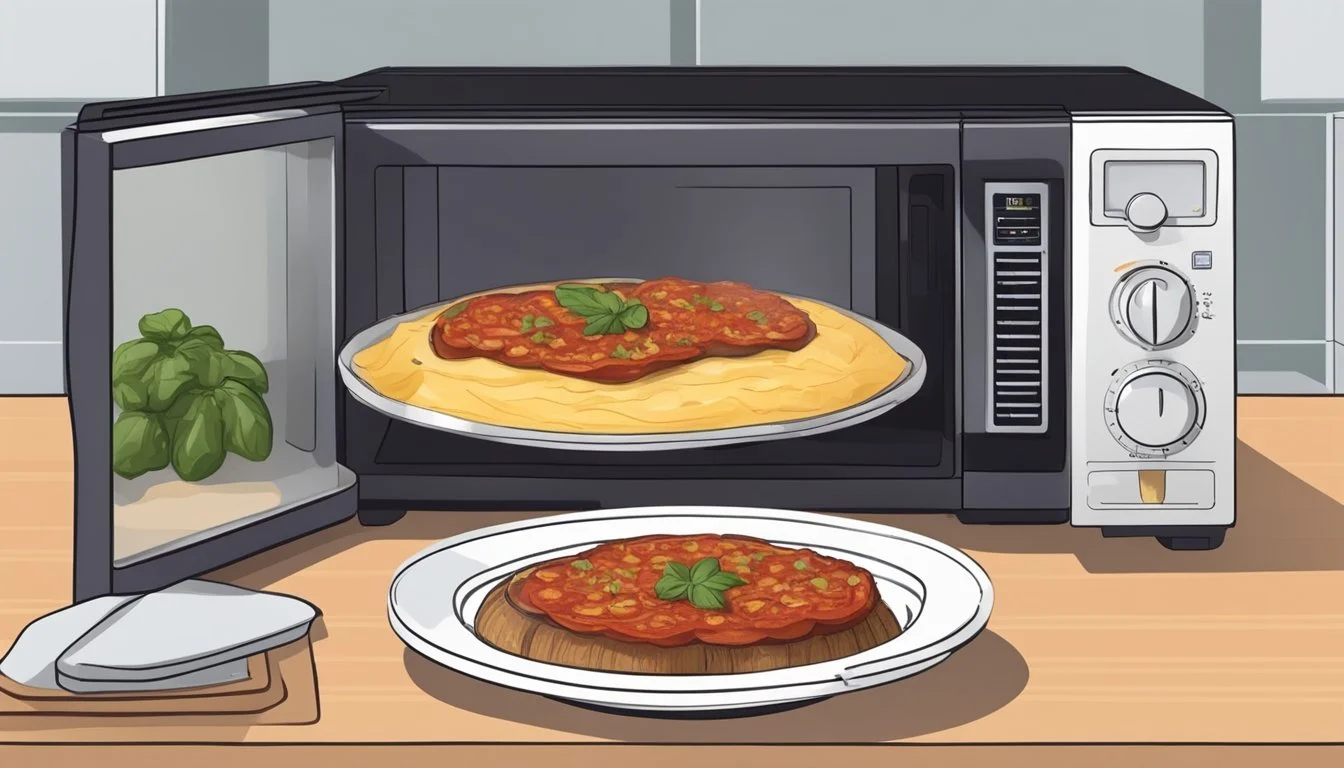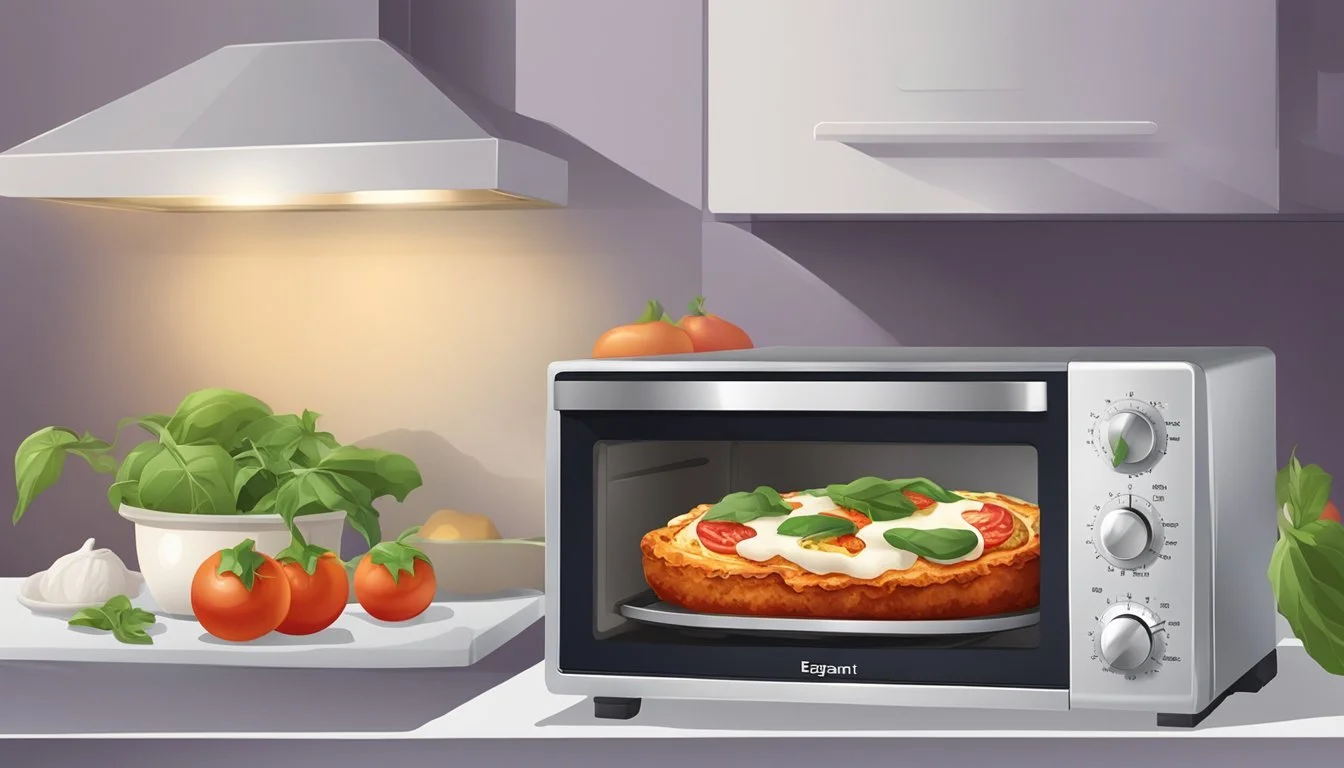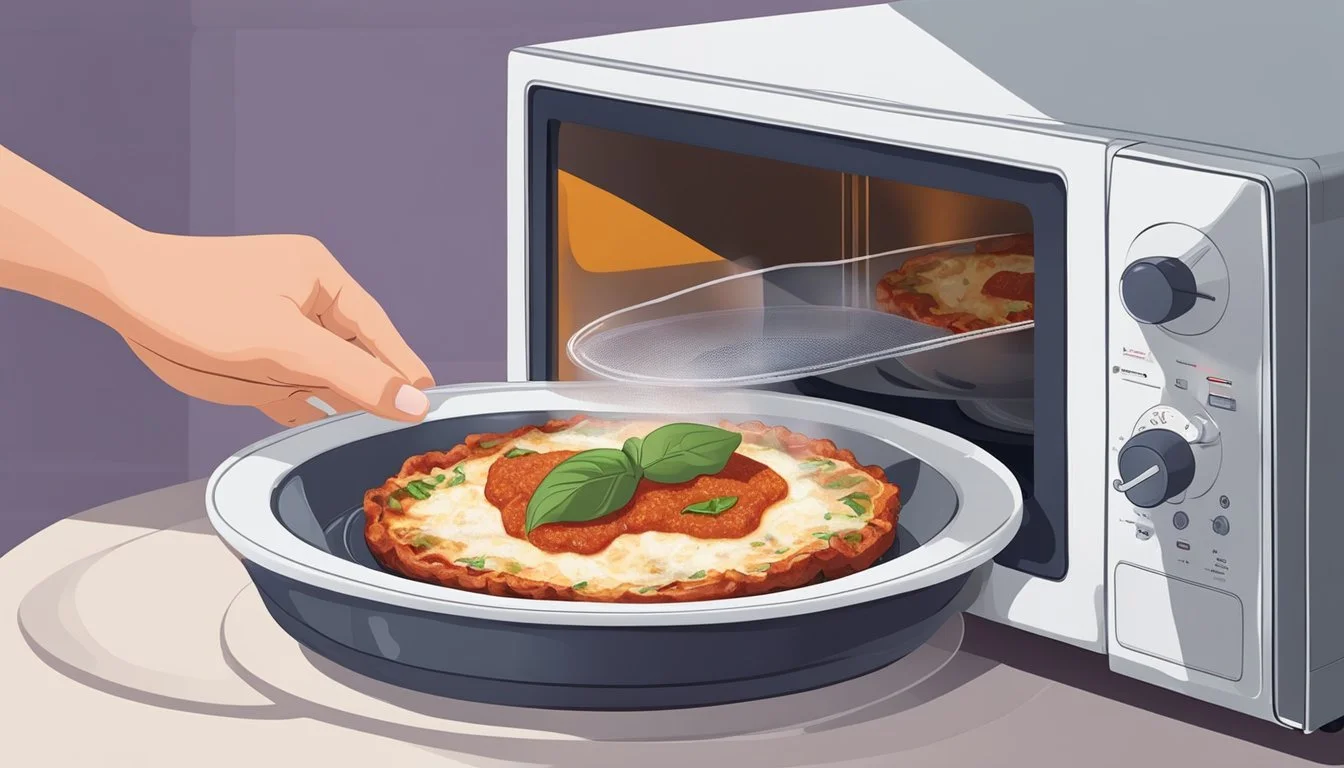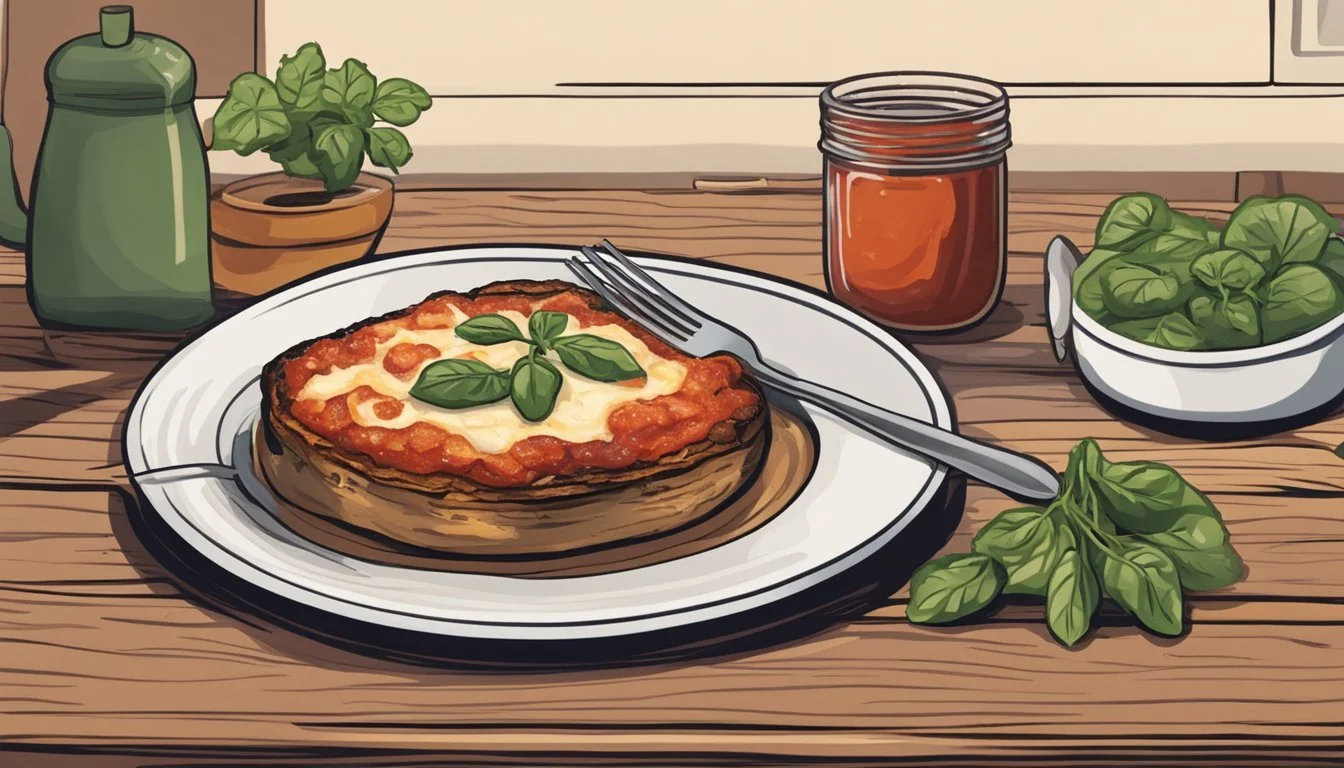How to Reheat Eggplant Parmesan
Expert Tips for Perfect Texture
Reheating eggplant parmesan can sometimes be a challenge, but with the right techniques, it is possible to enjoy this classic Italian dish as if it were freshly made. The best way to reheat eggplant parmesan is by using the oven at 350°F (180°C), which preserves its crispy texture while ensuring even heating. This method involves placing the dish in an oven-safe container, covering it loosely with foil, and baking until warmed through.
For those who prefer quicker methods, the microwave and air fryer offer great alternatives. The microwave is fast and convenient, though it may result in a slightly softer texture. Placing the eggplant parmesan in a microwave-safe container, keeping the lid slightly askew, and heating it can get the job done efficiently. On the other hand, using an air fryer at 350°F (180°C) for about 5-7 minutes provides a crispy exterior similar to the oven method, making it a popular choice for those short on time.
Options like the skillet and toaster oven are also viable, catering to different preferences and available kitchen equipment. Each method has its own merit, ensuring that no matter what tools are at hand, anyone can savor the delightful flavors of reheated eggplant parmesan.
Understanding Reheating Eggplant Parmesan
Proper reheating of eggplant Parmesan is crucial to maintain its texture, flavor, and ensure food safety. Different methods can influence the final outcome, making it important to consider factors such as internal temperature and cooking techniques.
Importance of Proper Reheating
The key to reheating eggplant Parmesan lies in preserving its crispy texture and rich flavor. Overheating can lead to a mushy consistency, while underheating may leave parts of the dish cold and unappetizing. Using an oven is often preferred as it allows for even heating and crispiness. Techniques such as covering the dish with foil can prevent excessive drying out.
Factors Affecting Texture and Flavor
Several factors can impact the final texture and flavor of reheated eggplant Parmesan. The amount of sauce, cheese, and thickness of eggplant slices all play a role. Reheating at a moderate oven temperature, typically around 350°F (180°C), helps retain these qualities. Avoiding the microwave for large portions can prevent sogginess.
Safety Considerations
Food safety is paramount when reheating dishes like eggplant Parmesan. Ensuring the internal temperature reaches at least 165°F (74°C) minimizes the risk of foodborne illnesses. Using a food thermometer to check the temperature can be an effective practice. Additionally, covering the dish with foil while reheating helps maintain moisture without compromising safety.
Preparing Eggplant Parmesan for Reheating
Proper storage and thoughtful addition of extra ingredients ensure the eggplant parmesan reheats well, maintaining its flavor and texture.
Storage and Preservation
To keep leftover eggplant parmesan fresh, begin by storing it in an airtight container. Place the container in the refrigerator if planning to consume within the next 3-4 days. For longer preservation, consider freezing the dish.
When freezing, first wrap the eggplant parmesan tightly with plastic wrap or aluminum foil. Then, place the wrapped dish in a freezer-safe container. Label the container with the date to keep track of its storage duration.
Avoid keeping it at room temperature for extended periods to prevent bacterial growth, which can impact safety and taste.
Adding Extra Ingredients
Enhance reheated eggplant parmesan by adding extra ingredients. Before reheating, sprinkle additional cheese on top to refresh its creamy texture. Mozzarella or parmesan cheese works well.
For extra moisture, consider adding more sauce. Spread a thin layer of marinara or tomato sauce over the dish before placing it in the oven or microwave.
These additions ensure the reheated eggplant parmesan remains flavorful and avoids dryness, closely resembling its fresh-made state.
Reheating Methods Overview
Reheating eggplant parmesan can be done in several ways, each with its own benefits. The most common methods include using an oven, microwave, skillet, or air fryer.
Oven Method
Preheat the oven to 350°F (180°C). Transfer the eggplant parmesan to an oven-safe dish and cover loosely with foil. Heat for 15-20 minutes, uncovering in the last 5 minutes to crisp the top.
Microwave Method
Place the eggplant parmesan in a microwavable container. Cover it with a lid, leaving it askew to allow steam to escape. Microwave on medium power for 2-3 minutes, checking and turning halfway through.
Skillet Method
Heat 1-2 tablespoons of olive oil over medium-high heat in a skillet. Add the eggplant slices and cook for 1-2 minutes per side until golden brown and heated through. This ensures a crispy exterior.
Air Fryer Method
Preheat the air fryer to 350°F. Place the eggplant parmesan in the air fryer basket. Cook for 5-7 minutes, or until heated through. This method helps maintain a crispy texture.
These methods cater to different preferences, whether you desire a quick reheating process or a focus on preserving the dish's crispy texture.
Oven Reheating Technique
Reheating eggplant parmesan in an oven ensures it warms evenly and retains crispiness. Both conventional ovens and broilers can be used for this purpose to achieve the best results.
Using Conventional Oven
Preheat the oven to 350°F (180°C). Place the eggplant parmesan in an oven-safe dish.
Cover the dish loosely with aluminum foil to prevent drying out. This will keep moisture in without making the coating soggy. Bake for about 15-20 minutes or until the internal temperature reaches 165°F (74°C). If additional sauce or cheese is desired, add these ingredients halfway through the heating process.
Check periodically to ensure the dish is heating evenly and adjust time based on thickness and portion size. Finally, uncover the dish for the last 5 minutes to help crisp the top layer. Using parchment paper instead of foil is another option to avoid sticking.
Utilizing Broiler for Crispiness
After reheating the eggplant parmesan in a conventional oven, the broiler can add extra crispiness to the top layer. Turn the broiler on high.
Move the oven rack to the top position, ensuring the dish is about 6 inches from the broiler element. Place the reheated eggplant parmesan back in the oven without any cover.
Broil for about 2-3 minutes or until the desired crispy coating is achieved. Watch closely, as broiling can quickly burn the food. This step enhances the textural contrast between the crispy top and the tender layers beneath.
Microwave Reheating Steps
Reheating eggplant parmesan in the microwave can save time while still achieving a tasty result by following careful steps and using the right techniques to avoid moisture loss.
Avoiding Moisture Loss
To prevent your eggplant parmesan from becoming dry, start by placing it on a microwave-safe plate. Cover it with a damp paper towel to help maintain moisture. This creates a steam effect which ensures the dish does not dry out.
Heat the dish in 30-second intervals. This gradual reheating method allows the dish to warm evenly without overcooking. Rotate the plate halfway through each interval to maintain an even temperature.
Check the temperature regularly and stop microwaving once it's hot throughout, usually after 1-2 minutes. This method helps preserve both the texture and flavor, ensuring your dish remains enjoyable.
Stovetop Skillet Reheating
The stovetop skillet method is an excellent choice for reheating eggplant parmesan. It results in a crispy and flavorful dish.
Materials Needed:
Skillet
1-2 tablespoons of olive oil
Stove
Spatula
Steps:
Preheat the Skillet: Add 1-2 tablespoons of olive oil to the skillet. Heat over medium-high until the oil shimmers.
Place the Eggplant: Lay the leftover eggplant parmesan slices in the skillet.
Heat Until Brown: Cook for 1-2 minutes until golden brown.
Flip and Repeat: Turn each slice and heat the other side for 1-2 minutes until crispy.
Tips:
Ensure the eggplant doesn't overlap for even heating.
For added flavor, sprinkle a bit of extra cheese on top.
Monitor closely to avoid burning.
This method preserves the crispy texture and enhances the flavors.
Alternative Reheating Appliances
Reheating eggplant parmesan can vary depending on the appliance you use. Different methods offer unique benefits in terms of convenience, texture, and taste.
Using a Toaster Oven
A toaster oven is an excellent tool for reheating eggplant parmesan. It provides even heating and helps achieve a crispy texture similar to the original dish.
Set the toaster oven to 325°F (160°C). Place the eggplant parmesan in an oven-safe dish and cover loosely with foil to prevent over-crisping. Heat for 5-10 minutes, then remove the foil to allow the top to crisp up. Keep an eye on it to avoid burning, usually requiring an additional 3-5 minutes.
Efficiency of an Air Fryer
The air fryer method is a favorite for those seeking speed and efficiency. It quickly reheats while maintaining the dish’s crisper elements.
Preheat the air fryer to 350°F (175°C). Arrange the eggplant parmesan in a single layer in the basket to ensure even heating. Cook for 5-8 minutes, checking halfway through to ensure even warming. This method is particularly effective at restoring the dish's crispy texture without drying it out.
Slow Cooker Reheating
For those who have more patience and prefer a slower method, a slow cooker can be used. This appliance excels at keeping the dish moist but does not offer the crispy texture some might prefer.
Place the eggplant parmesan in the slow cooker and set it to the low setting. Heat for 2-3 hours, or until it reaches your desired temperature. This method ensures that the dish remains moist and tender, making it a good choice for reheating in bulk or when you’re not in a rush.
Finishing Touches After Reheating
After reheating eggplant parmesan, certain final steps will ensure it is both delicious and safe to eat. These steps include checking the internal temperature and adding the right garnishes and accompaniments for an enhanced dining experience.
Checking Internal Temperature
Ensuring the eggplant parmesan reaches the correct internal temperature is crucial for safety and taste. The ideal internal temperature should be 165°F (74°C). Use a food thermometer to penetrate the center of the dish.
It's essential to check multiple spots within the casserole to confirm even heating. For individual slices reheated in a skillet or oven, check the thickest part of the slice.
If the temperature is below 165°F, continue reheating for a few minutes and recheck the temperature. Avoid guessing the temperature, as incorrect heating could lead to unpleasant textures or possible foodborne illness.
Adding Garnishes and Accompaniments
After ensuring the eggplant parmesan is hot enough, enhancing the dish with appropriate garnishes and accompaniments is key.
Garnish Ideas:
Grated Cheese: Sprinkle fresh parmesan or mozzarella for an extra melty top.
Fresh Basil Leaves: Add a few leaves for a pop of color and freshness.
Chopped Parsley: Provides a slight herby contrast to the savory flavors.
Accompaniments:
Salad: A crisp green salad with a light vinaigrette.
Bread: Serve with garlic bread or a crusty baguette.
Wine: Pair with a light red wine like Chianti or a well-chilled Pinot Grigio.
These finishing touches will ensure the reheated eggplant parmesan remains delightful and appetizing.
Serving Suggestions
When serving reheated eggplant parmesan, consider including garlic bread. The crispiness of the garlic bread complements the creamy texture of the eggplant parmesan.
Pair the dish with a green salad. A mix of fresh greens such as lettuce, spinach, or arugula adds a refreshing contrast.
For added flavor, sprinkle some parmesan cheese on top. The extra cheese enhances the overall taste.
A drizzle of balsamic glaze can also elevate the dish. It adds a sweet and tangy element that pairs well with the savory flavors.
Wine pairing can be a great addition to the meal. Opt for a glass of red wine like Chianti or Merlot.
Table arrangement matters as well. Serve the eggplant parmesan on a warm plate to keep it at the right temperature.
These suggestions aim to provide a delightful dining experience, balancing flavors and textures.
Handling Leftovers
After reheating eggplant parmesan, ensuring proper storage and handling is essential to maintain its quality and safety. Here are some effective methods for storing, freezing, and dividing leftover eggplant parmesan into individual portions.
Storing After Reheating
To properly store leftover eggplant parmesan, allow it to cool slightly before transferring it to an airtight container. Store it in the refrigerator where it can last for up to three to four days. If moisture is a concern, place a paper towel between the container and the lid to absorb any condensation.
Label the container with the date to keep track of freshness. When ready to eat, follow the recommended reheating methods to ensure the meal is safe and tasty.
Freezing Techniques
Freezing eggplant parmesan is a great way to extend its shelf life. First, let the dish cool to room temperature. Wrap individual slices tightly in plastic wrap or aluminum foil to prevent freezer burn. Place the wrapped pieces in a single layer on a baking tray and freeze for a few hours until solid.
Once frozen, transfer the slices to a freezer-safe bag or container. This method prevents slices from sticking together. Mark the container with the date. When reheating, bake directly from the frozen state at 350°F until heated through.
Dividing Into Individual Portions
Dividing leftover eggplant parmesan into individual portions makes reheating more convenient. Cut the dish into single-serving sizes and wrap each portion tightly in plastic wrap or foil. Place the wrapped pieces in an airtight container or bag.
This method not only saves space but also makes it easy to grab and reheat just the right amount. Label each portion with the date and contents to keep track of what’s in your refrigerator or freezer. This approach ensures that each serving remains fresh and reduces food waste.








